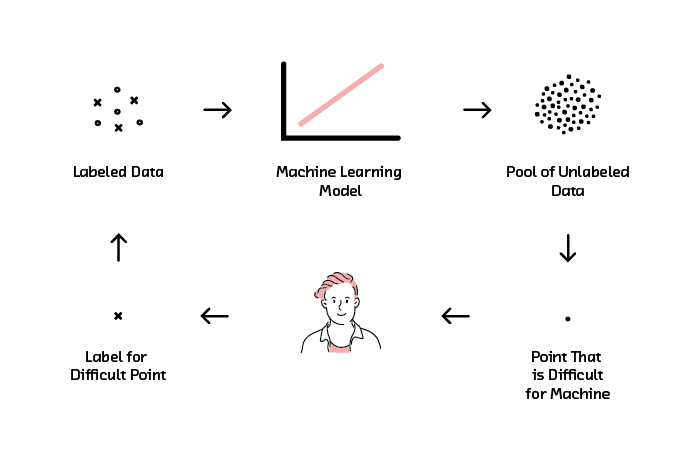Mar 20, 2019 · featured post
Learning with Limited Labeled Data
In recent years, machine learning technologies - especially deep learning - have made breakthroughs which have turned science fiction into reality. Autonomous cars are almost possible, and machines can comprehend language. These technical advances are unprecedented, but they hinge on the availability of vast amounts of data.
For a form of machine learning known as supervised learning, having data itself is not sufficient. Supervised machine learning, while powerful, needs data in a form that can serve as examples for what machines should learn. These examples often manifest themselves in the form of labeled data. The labels are used to teach and guide machines.
Unfortunately, data in the real world does not come nicely packaged with labels. Enterprises collect massive amounts of data - but only a small sliver (if any) of that data is labeled. For example, risk assessment is crucial for financial institutions, because it sets the amount of capital required to absorb systemic instability. Large volumes of contracts and loan agreements exist and can be used to build a risk model, but not all of them have been processed to extract relevant information, such as the purpose of the agreement, the loan amount, and the collateral amount. In corporate IT, customer service chat logs are available and can be used to identify customer concerns and satisfaction levels, but not many are annotated. In healthcare, medical images are abundant and can be used to build a diagnostic model, but these images are rarely labeled properly.
In order to leverage supervised machine learning opportunities, many enterprises attempt to manually label vast amounts of unlabeled data. This undertaking can be prohibitively expensive, inefficient, and time-consuming.
Learning with limited labeled data, then, is a machine learning capability that enables enterprises to leverage their pool of unlabeled data to open up new product possibilities. While there are many approaches, most of them attempt to capture the available labeled data using a representation that can be further adjusted if and when new labels are obtained.
Active learning is one such approach. It takes advantage of collaboration between humans and machines to smartly pick a small subset of data to be labeled. A machine learning model is then built using this small subset of data.

The latest report and prototype from Cloudera Fast Forward Labs explores active learning and its implications. While not a new framework, active learning has recently been adapted to deep learning applications, where the labeled data requirement is even more stringent. Along with the availability of tooling and a maturing supporting ecosystem, active learning is now newly exciting!
The report will be available to corporate subscribers to Cloudera Fast Forward Labs’ research and advising service on April 2nd. The prototype will be made available to the public the same day.
Please join us on Wednesday, April 3rd at 10:00am PST (1:00pm EST) for a live webinar on “Learning with Limited Labeled Data.” Shioulin Sam and Nisha Muktewar of Cloudera Fast Forward Labs will be joined by Sanjay Krishnan (Assistant Professor in Computer Science, University of Chicago) and Ines Montani (Founder of Explosion.ai).
Click here to watch the webinar!










